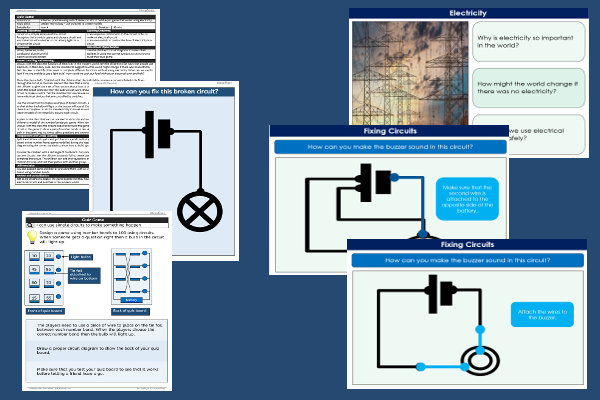Lesson Six – Quiz Game

This science teaching pack for Key Stage Two gets the children to practise using sets of series circuits to build and play a model quiz game that works using electricity to indicate the answers to each of the questions.
The class can explain and record how to use a switch to control the flow of electricity in a circuit when planning and constructing their quiz game models.
Download this teaching pack including a lesson plan, classroom activities and an interactive presentation to practise using sets of series circuits to build and play a model quiz game that works using electricity to indicate the answers to each of the questions
Activities in this teaching pack include display posters to identify and describe how to fix a broken circuit shown using electrical symbols and worksheet to practise using sets of series circuits to build a quiz game that works using electricity to indicate answers.
The interactive presentation gets the children to explore how to use sets of series circuits to build and play a quiz game that works using electricity to indicate answers.
This lesson is part of a science scheme of work to get the children to identify and record how to build a range of electrical series circuits to control and manage devices and components for different functions and outputs. There are teaching activities for shared learning, differentiated worksheets to support independent learning and interactive presentations to introduce concepts and key skills.
-

Theme Park Visit
Practise identifying and calculating the timing and duration of rides and events when visiting a theme park on a special family trip
-

Family Holiday Trips
Identify and record how to compose and publish recounts using adverbials of time and place to describe family holidays to different places in the world
-

Money Multiplication
Explain and model how to use standard written calculation methods to multiply money amounts in pounds and pence when solving number problems
-

Sport Teams
Explain and model how to use brackets and dashes to add extra information to sentences describing how to play sports and games as part of a team
